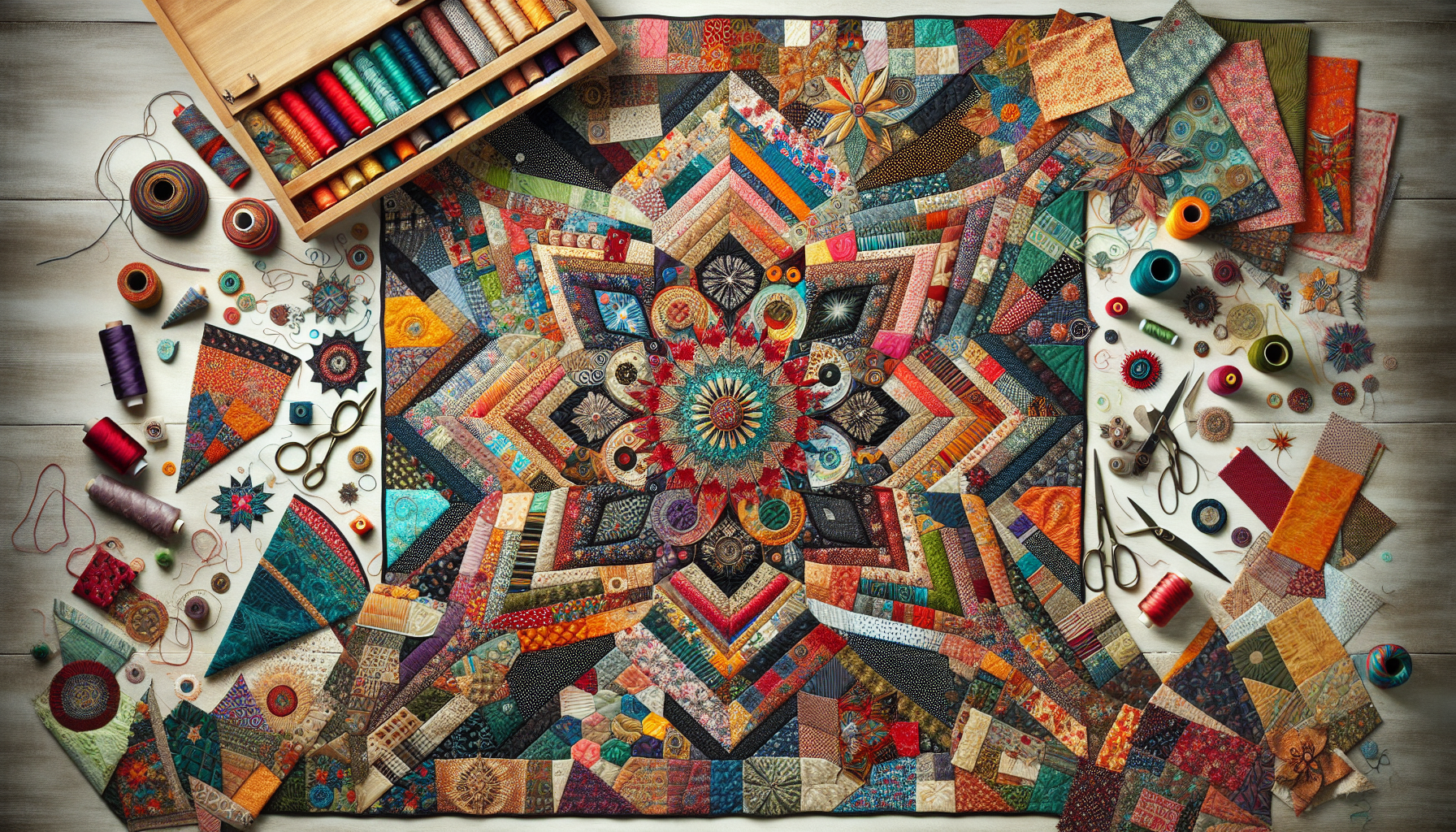Have you ever wondered what patchwork techniques are all about? Patchwork is a popular form of sewing that involves sewing together different pieces of fabric to create a larger, more intricate design. It is a highly creative and versatile craft that has been practiced for centuries. In this article, we will explore the fascinating world of patchwork techniques, uncovering their history, techniques, and the endless possibilities they offer for creating beautiful and unique works of art. Whether you’re a seasoned quilter or a beginner looking to dive into the world of sewing, this article will provide you with a comprehensive introduction to the art of patchwork techniques. Patchwork techniques refer to the various methods and skills used to create beautiful patchwork designs by stitching together small pieces of fabric. This versatile art form has a long history and has evolved over time to include both traditional and modern approaches. Whether you are a beginner or an experienced quilter, understanding the different patchwork techniques and their applications can help you create stunning quilts, garments, and home decor items.
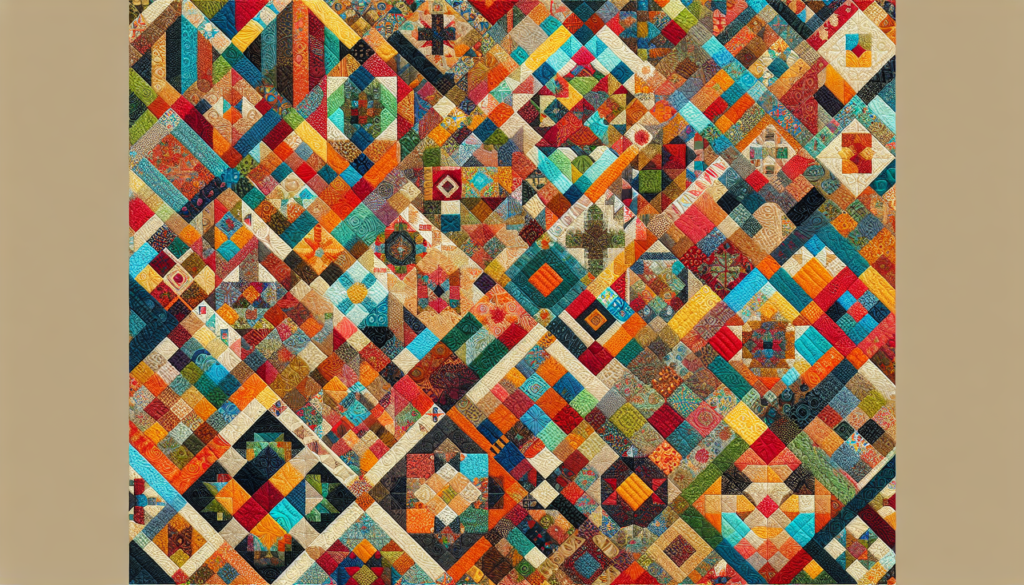
1. Definition of Patchwork Techniques
1.1 Traditional Definition
Traditionally, patchwork referred to the practice of stitching together small scraps of fabric to create larger textile pieces. This technique was born out of necessity, as it allowed people to repurpose fabric remnants and make use of every bit of cloth. In its early days, patchwork was mainly focused on practicality rather than aesthetics.
1.2 Modern Definition
In modern times, patchwork techniques have evolved to embrace artistic expression and creativity. While still rooted in the tradition of stitching small fabric pieces together, patchwork now encompasses a wide range of styles, designs, and fabric selections. Contemporary quilters have expanded the possibilities of patchwork, experimenting with different shapes, colors, and patterns, resulting in unique and visually striking creations.
2. History of Patchwork Techniques
2.1 Origins of Patchwork
The origins of patchwork can be traced back to ancient times, with evidence of patchwork practices found in different cultures around the world. The earliest known example of patchwork dates back to ancient Egypt, where small pieces of fabric were sewn together to create blankets and garments. Similar techniques were also found in ancient China, India, and the Middle East.
2.2 Evolution of Patchwork Techniques
Patchwork techniques continued to evolve throughout history, with significant advancements occurring during the Middle Ages and the Renaissance. During this time, patchwork became a popular craft among women of various social classes, and intricate designs and motifs started to emerge. The tradition of quilting, which involves stitching together layers of fabric with padding in between, became closely associated with patchwork.
3. Tools and Materials Used in Patchwork Techniques
3.1 Sewing Machine
While patchwork can be done by hand, many quilters prefer to use a sewing machine for faster and more precise stitching. A reliable sewing machine with adjustable stitch length and a variety of presser feet can greatly facilitate the patchwork process.
3.2 Needles and Thread
If you choose to do hand stitching, a good selection of needles in different sizes and types is essential. Sharp needles are ideal for piecing, while larger needles with a large eye are suitable for quilting. High-quality threads in various colors should also be a part of your patchwork toolkit.
3.3 Fabrics and Their Selection
Fabric selection is a critical aspect of patchwork. Quilters often choose cotton fabrics due to their versatility and ease of handling. However, any fabric that can be cut and sewn comfortably can be used in patchwork. It’s essential to consider the quality, color, pattern, and texture of the fabric to achieve the desired outcome.
3.4 Other Essential Supplies
Other useful tools and supplies for patchwork include rotary cutters, cutting mats, rulers, marking tools, and pins. These items assist in accurately measuring and cutting fabric, ensuring precise piecing and achieving professional results.
4. Basic Patchwork Techniques
4.1 Piecing
Piecing is the fundamental technique in patchwork where small fabric pieces, known as patches, are sewn together to form larger units. Quilters use precise cutting and stitching methods to create visually appealing patterns and designs.
4.2 Appliqué
Appliqué involves stitching smaller fabric pieces onto a base fabric to create decorative motifs and designs. It allows for more intricate details and adds depth to a patchwork project. There are different appliqué techniques, including needle-turn, raw edge, and fusible appliqué.
4.3 English Paper Piecing
English paper piecing is a hand-sewing technique that uses paper templates to stabilize fabric and achieve precise shapes. Small fabric pieces are basted around the paper shapes, and the patches are then stitched together, resulting in accurate and geometric patchwork designs.
4.4 Foundation Paper Piecing
Foundation paper piecing is another method for achieving precise patchwork designs. Fabric pieces are sewn onto a foundation paper or fabric, following a printed pattern. This technique is particularly useful for intricate or irregularly shaped designs.
4.5 Quilting
Quilting is the process of stitching through the layers of a patchwork project to secure them together and create a decorative pattern. Quilting can be done by hand or with a sewing machine, and there are various quilting designs and techniques to choose from.
4.6 Sashing
Sashing refers to the strips of fabric inserted between blocks or units of a patchwork project. It adds visual interest, creates separation between patches, and helps unify the overall design.
4.7 Binding
Binding is the finishing touch of a patchwork project. It involves enclosing the raw edges of the quilt with a strip of fabric, which is folded over and stitched to secure it in place. Binding not only provides a neat edge but also adds a decorative element to the quilt.
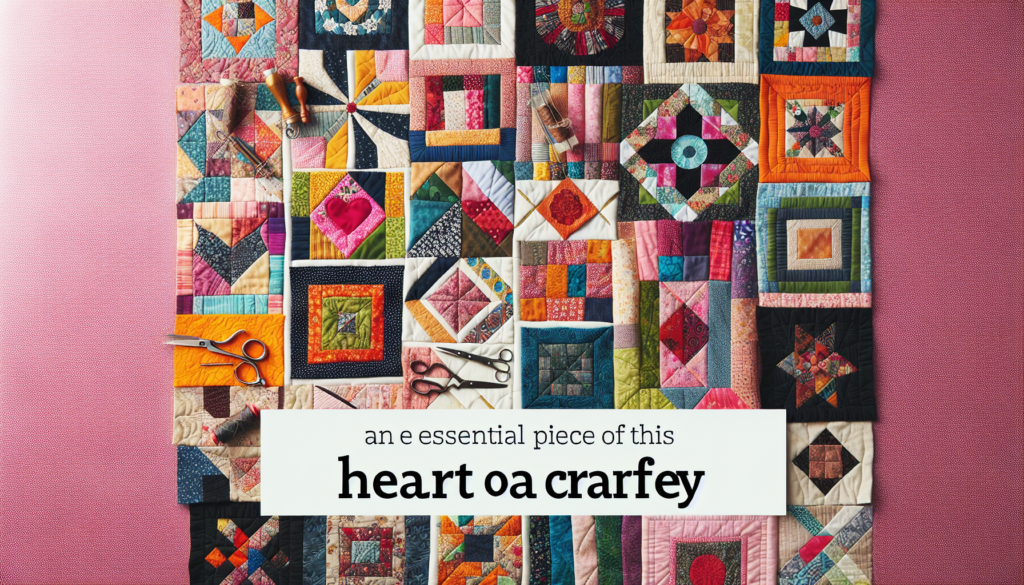
5. Advanced Patchwork Techniques
5.1 Cathedral Windows
Cathedral windows is a unique patchwork technique that creates three-dimensional folded fabric windows on a background fabric. It involves folding and layering fabric to create origami-like shapes.
5.2 Bargello
Bargello is a patchwork technique that creates intricate and visually mesmerizing designs using long strips of fabric sewn together. The fabric strips are arranged in a gradient or color sequence to achieve a stunning optical illusion effect.
5.3 Seminole
Seminole patchwork originated from the Seminole Native American tribe. This technique involves sewing narrow fabric strips together and then cutting them into desired shapes to create intricate patterns and borders.
5.4 Trapunto
Trapunto, also known as stuffed quilting, is a technique that adds extra dimension to a quilt by adding padding or stuffing between quilt layers. This results in a raised or embossed effect on the quilt surface.
5.5 Mariner’s Compass
Mariner’s Compass is a patchwork technique that creates a circular design resembling a compass rose. It involves precision piecing and intricate pattern placement to achieve the desired effect.
5.6 Pineapple Block
Pineapple block is a variation of the log cabin patchwork design. It features multiple rounds of piecing, creating a geometric pineapple-like pattern that radiates from the center.
5.7 Crazy Quilting
Crazy quilting is a free-form and expressive patchwork technique where irregularly shaped fabric patches are stitched together in a random and often asymmetric manner. Intricate embroidery, beading, and embellishments are often added to enhance the overall design.
6. Popular Patchwork Patterns
6.1 Log Cabin
The log cabin pattern is one of the most iconic and widely recognized patchwork designs. It involves creating blocks by sewing strips of fabric around a center square, representing a cabin surrounded by logs.
6.2 Irish Chain
The Irish Chain pattern is characterized by a series of squares or rectangles, with alternating blocks forming a chain-like design. It is a timeless and visually stunning pattern that can be created in various color combinations.
6.3 Double Wedding Ring
The double wedding ring pattern is a classic design that symbolizes eternal love and commitment. It features interlocking rings that create a beautiful and intricate motif.
6.4 Dresden Plate
The Dresden Plate pattern showcases a flower-like design with petal-shaped fabric pieces radiating from a central circle. It can be used to create vibrant and visually striking quilt blocks.
6.5 Flying Geese
The flying geese pattern consists of triangles sewn together to resemble a flock of flying geese. It is a versatile pattern that can be incorporated into various quilt designs and layouts.
6.6 Jacob’s Ladder
Jacob’s Ladder is a pattern that creates a diagonal pathway of squares or rectangles, resembling the biblical ladder. It is a popular and visually appealing design choice for quilts.
6.7 Drunkard’s Path
The Drunkard’s Path pattern features interlocking curved pieces that create unique and visually captivating designs. It requires precise cutting and careful piecing to achieve the desired effect.
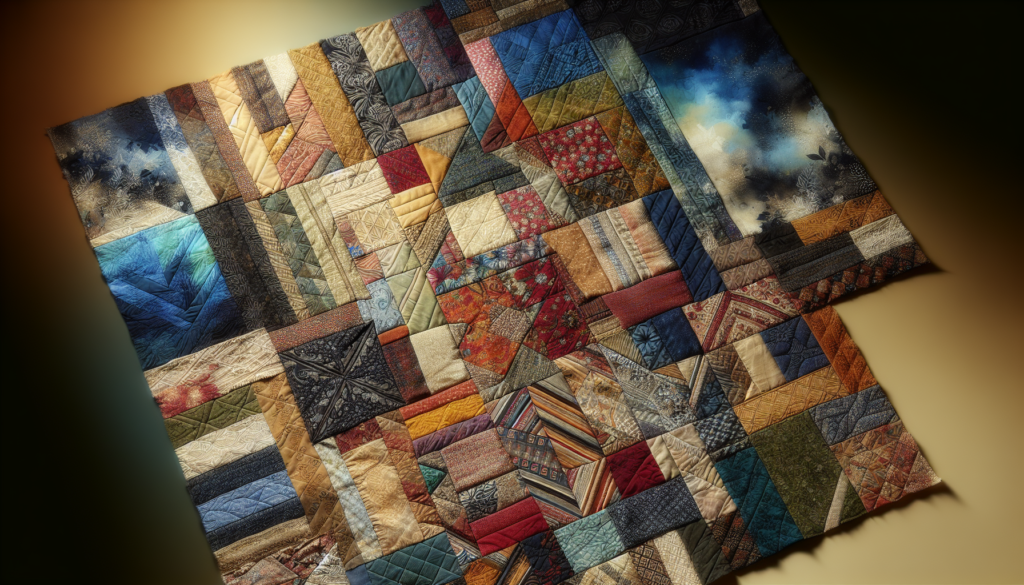
7. Tips and Techniques for Successful Patchwork
7.1 Accuracy in Cutting and Piecing
Accurate cutting and precise piecing are crucial for achieving professional-looking patchwork. Using quality cutting tools, such as rotary cutters, rulers, and mats, can greatly assist in achieving precise measurements and clean edges.
7.2 Pressing and Ironing
Proper pressing and ironing techniques can make a significant difference in the overall appearance of your patchwork projects. It’s important to press seams flat before opening them to reduce bulk and achieve crisp, neat results.
7.3 Matching Points and Seams
Achieving precise matching of points and seams is essential for creating visually pleasing patchwork. Pinning fabric pieces together, marking seam allowances, and sewing with a consistent seam allowance can help achieve accurate alignment.
7.4 Color and Fabric Selection
Color and fabric selection play a crucial role in the success of a patchwork project. Consider the desired mood, theme, and color palette of your project, and choose fabrics that complement each other harmoniously.
7.5 Quilting Tips
When quilting, it’s important to choose the right batting or filling material that suits your desired level of thickness and warmth. Experiment with different quilting designs and techniques to enhance the visual impact and texture of your quilts.
7.6 Troubleshooting Common Patchwork Issues
Patchwork can sometimes present challenges, such as fabric distortion, puckering, or mismatched seams. Familiarize yourself with common issues and their solutions, such as using a walking foot or adjusting tension settings on your sewing machine.
8. Patchwork Techniques in Different Cultures
8.1 Japanese Sashiko
Sashiko is a traditional Japanese quilting technique that involves stitching intricate patterns with a running stitch. Historically, sashiko was used to strengthen and repair garments, but it has also become a popular decorative technique in patchwork.
8.2 Indian Kantha
Kantha is an embroidery technique from India that involves stitching layers of fabric together to create quilts or textiles. It is characterized by running stitches that create intricate patterns and designs.
8.3 African American Quilting
African American quilting traditions have deep cultural and historical significance. These quilts often tell stories, celebrate family history, or depict community narratives through vibrant colors, symbolic motifs, and bold geometric designs.
8.4 Native American Quilting
Native American quilting techniques vary across different tribes and regions. From intricate appliqué work to traditional designs inspired by nature and tribal symbols, Native American quilts showcase the rich heritage and storytelling traditions of Indigenous cultures.
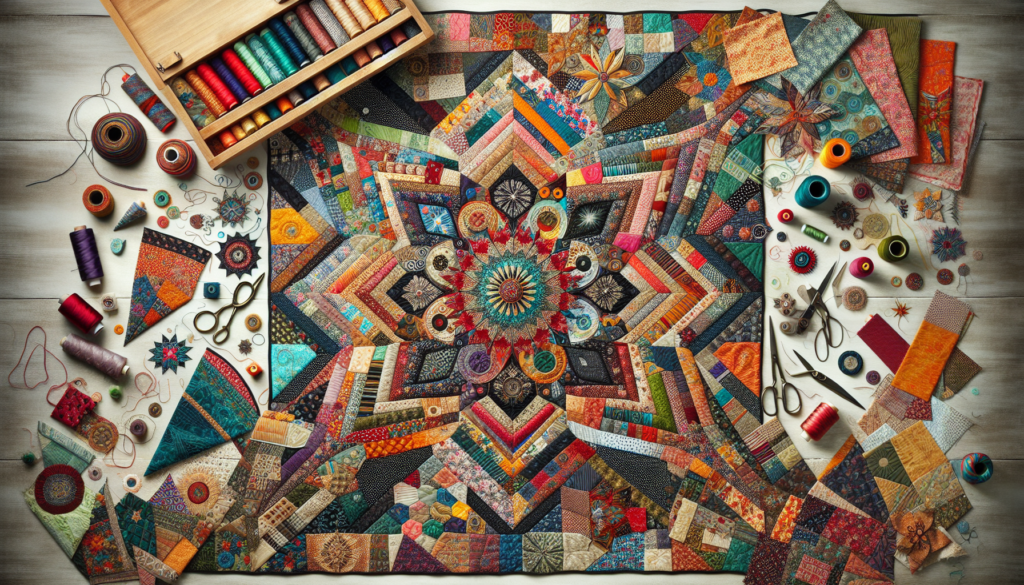
10. Conclusion
Patchwork techniques have a rich history and continue to be a popular craft practiced by quilters around the world. From the traditional methods of stitching together fabric scraps for utility to the modern artistic expressions seen in contemporary quilts, the possibilities of patchwork are vast. By exploring different techniques, experimenting with various patterns, and incorporating your own creative flair, you can create beautiful and meaningful patchwork pieces that will be treasured for generations to come. So gather your tools, select your fabrics, and embark on a patchwork journey that will ignite your creativity and bring joy to your life as a quilter.

